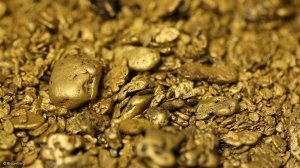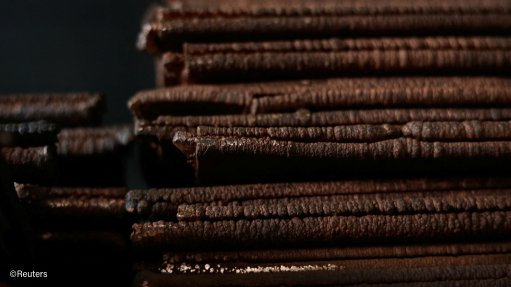Kenya mining project to increase processing capacity


UNCONVENTIONAL APPROACH Goldplat Recovery is on track to establish Ghana as a West African regional hub to process and recover gold from by-products of the mining industry
Photo by Bloomberg
To continue its mining and gold processing operations and increase gold production, Aim-listed Goldplat has completed and continues to implement a number of capital projects to improve capacity and efficiencies.
Goldplat has a different model to the usual gold producer, in that, in addition to mining gold at its Kilimapesa gold mine, in Kenya, it recovers gold from by-products of the mining process and waste from mines at its recovery operations in South Africa and Ghana.
At its Kilimapesa gold project, Goldplat will establish a new tailings deposition facility, as well as a new processing plant at the mine in the next financial year, states Goldplat CEO Gerard Kisbey-Green.
The Kilimapesa mine is located in the Migori Archaean Greenstone Belt, in western Kenya. It has a Joint Ore Reserves Committee-compliant resource of 8.71-million tons at 2.40 g/t for 67 446 oz of gold at a cutoff grade of 1 g/t of gold for all categories. The mining licence for the mine was renewed in February for a further year.
“The Kilimapesa plant is old and currently capacity-constrained, while the tailings deposition facility capacity is also decreasing,” Kisbey-Green explains. He highlights that a new processing plant and tailings facility is imperative to increase the company’s production from 2 700 oz/y to at least 6 000 oz/y – thereby also improving the economic viability of the mine.
In its plan to establish the new tailings facility, Goldplat has acquired land close to the mine and has mostly completed the required rental negotiations, community forum due diligences and the governmental administration during the past year.
Goldplat further aims to move a carbon-in-leach (CIL) plant from its operations at Gold Recovery Ghana (GRG) to the Kilimapesa mine. “From a capital perspective, this move will be cost efficient in the near term, as well as enable the company to temporarily replace the old, inefficient processing plant,” Kisbey-Green says.
The processing plant is currently being deconstructed. Following the conclusion of all governmental administration, Goldplat aims to complete the installation of the new plant by the end of June 2016.
In due course and capital permitting, however, the company aims to acquire a new plant.
Further, Goldplat remains in discussions to secure a funding partner for an upgrade at Kilimapesa with a number of interested parties, Kisbey-Green reiterates.
On-Reef Exploration
Meanwhile, the dewatering and equipping of the Teng-Teng decline shaft and existing reef drives, which falls within the Kilimapesa exploration licence, have been completed. The company is awaiting a pump from South Africa to install at the shaft, before it restarts the underground on-reef exploration this month, Kisbey-Green notes.
The on-reef exploration underlines Goldplat’s drive to increase the resources, providing mining flexibility and a high-grade feed to the processing plant.
“In the past, mining was executed over channel grades of about 25 g/t to 30 g/t,” Kisbey-Green says, pointing out that the company aims to delineate a resource under the exploration “to provide an ore sweetener of high-grade material for the processing plant”.
Ghana Outlook
With regard to its gold recovery operations, the company remains focused on building on its gold production rates. Despite the difficulties the company’s Ghanaian plant GRG faced in the past financial year, Kisbey-Green notes that the company is on track to establish Ghana as a West African regional hub to process and recover gold from by-products of the mining industry sourced from countries such as Burkina Faso, Côte d’Ivoire and Mali.
“Goldplat is in discussions with parties in West Africa to determine the import or export viability of material from these countries, as well as with some parties in South America to procure material and import it to Ghana,” he adds.
In sourcing another potential revenue stream for the Ghana operations, GRG identified a large scope for the shot blasting and treatment of steel mill liners from different mining operations. “GRG, therefore, is constructing a shot blast facility in South Africa, which will be moved to Ghana before the end of December,” Kisbey-Green adds.
Goldplat also spent significant amounts of capital on the refurbishment and replacement of old equipment across its operations to ensure continuous production. Kisbey-Green stresses that these capital projects were completed and successfully financed internally to avoid potential dilution for shareholders.
Although GRG generated significant revenue from different key work streams, which included the primary spiralling-incineration facility, the CIL plant and the gold treatment arrangement with several customers, Kisbey-Green acknowledges that GRG’s gold production in Ghana decreased from 13 700 oz in 2014 to 6 000 oz in 2015. Gold sold from Ghana decreased from 12 600 oz to 2 500 oz, as operations ground to a halt in the past financial year.
Challenges experienced by the Ghana operations included the impacts of continuing difficulties with third-party refiner Rand Refinery, which was unable to process certain by-product material for the company. Mining Weekly reported in July that Goldplat, however, has “secured sources to process all backlog material arising from the inability of Rand Refinery to process certain materials and has set a target to clear the backlog by December”.
The company has also signed a contract with refiner Aurubis Refinery, in Germany, to process by-product material. Kisbey-Green reiterates that it is business as usual for the company, as the five-month pipeline from shipping to gold production is now full.
GRG further worked with the Ghana Environmental Protection Agency to ensure that operational activities at the CIL operation were consistent with best practice, preserved the integrity of the environment and protected other adjacent land users, with the aim to reinstate an agreement with intermediate gold producer Endeavour Resources before the end of December.
Comments
Press Office
Announcements
What's On
Subscribe to improve your user experience...
Option 1 (equivalent of R125 a month):
Receive a weekly copy of Creamer Media's Engineering News & Mining Weekly magazine
(print copy for those in South Africa and e-magazine for those outside of South Africa)
Receive daily email newsletters
Access to full search results
Access archive of magazine back copies
Access to Projects in Progress
Access to ONE Research Report of your choice in PDF format
Option 2 (equivalent of R375 a month):
All benefits from Option 1
PLUS
Access to Creamer Media's Research Channel Africa for ALL Research Reports, in PDF format, on various industrial and mining sectors
including Electricity; Water; Energy Transition; Hydrogen; Roads, Rail and Ports; Coal; Gold; Platinum; Battery Metals; etc.
Already a subscriber?
Forgotten your password?
Receive weekly copy of Creamer Media's Engineering News & Mining Weekly magazine (print copy for those in South Africa and e-magazine for those outside of South Africa)
➕
Recieve daily email newsletters
➕
Access to full search results
➕
Access archive of magazine back copies
➕
Access to Projects in Progress
➕
Access to ONE Research Report of your choice in PDF format
RESEARCH CHANNEL AFRICA
R4500 (equivalent of R375 a month)
SUBSCRIBEAll benefits from Option 1
➕
Access to Creamer Media's Research Channel Africa for ALL Research Reports on various industrial and mining sectors, in PDF format, including on:
Electricity
➕
Water
➕
Energy Transition
➕
Hydrogen
➕
Roads, Rail and Ports
➕
Coal
➕
Gold
➕
Platinum
➕
Battery Metals
➕
etc.
Receive all benefits from Option 1 or Option 2 delivered to numerous people at your company
➕
Multiple User names and Passwords for simultaneous log-ins
➕
Intranet integration access to all in your organisation



















